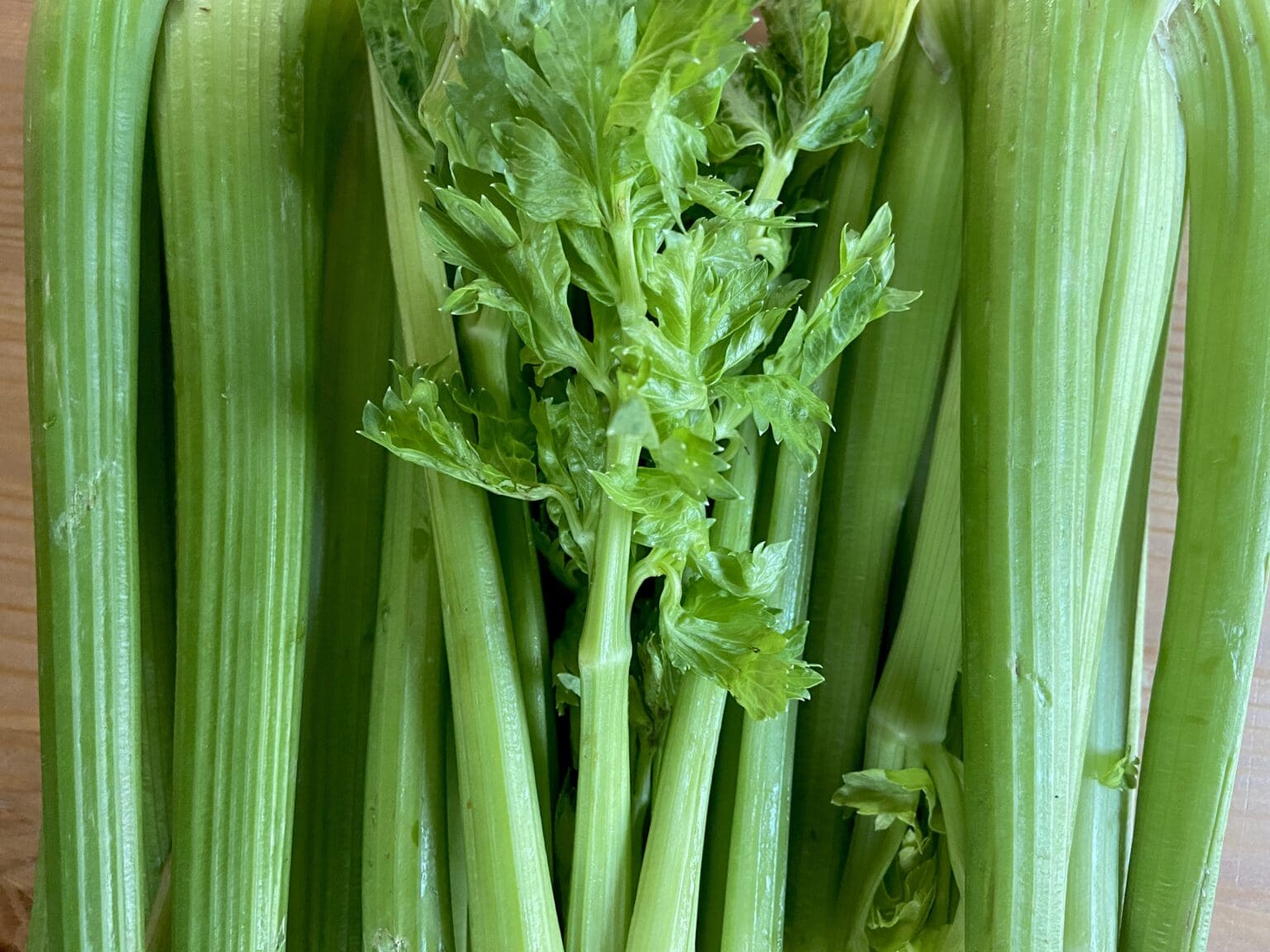Root-to-leaf cooking uses all edible parts of a plant, to both reduce food waste and make delicious dishes that may be new to you.
It’s a safe bet you have celery in your crisper drawer already or will sometime soon — especially with autumn and its parade of soups and casseroles around the corner.
When you use the stalks, save the leaves. Celery leaves are tender and flavorful, with a crisp green character. They have more peppery tang than the stalks, but less so than parsley; think of celery leaves as parsley gone mild. Culinarily, they’re used more like an herb than a rib of celery. Since most folks pick up a head of celery with a specific recipe already in mind, I’m focusing solely on these “bonus” leaves for this recipe.
Preserving celery leaves
Once you cut the leaves from the stalk, you can preserve the fresh leaves in the fridge for up to one week or freeze them for up to three months.
To use fresh, wash the leaves whole and shake off excess water. Wrap the leaves in a paper towel and keep them in a bag or jar in your fridge until ready for use.
For future use, wash the leaves whole and let them dry completely, then either chop finely or leave them intact depending on the intended use. Lay the leaves out flat on a baking tray lined with parchment paper and put in the freezer for 15–20 minutes until frozen. (This lay-flat method prevents the leaves from freezing into an impenetrable block.) Transfer into a bag or freezer-safe jar.
Celery leaf compound butter
Compound butter is a way to concentrate the flavors of herbs and spices. Use it to finish dishes with a pretty pat sliced right on top of a platter of vegetables or fresh bread, or add it to the skillet when searing meat or making sauce. Along with adding extra flavor, compound butter adds to the presentation of a dish.
This recipe is a fresh take on traditional compound butter. Celery leaves, which are bright and herbaceous, add their clean, crisp flavor to the butter, without being weighed down with heavier herbs or spices.
Use the best butter you can. You can use unsalted if you would like to finely tune the saltiness of the dish, but I always use salted butter and have never found it too salty. If you have a favorite vegan butter that comes in a block, feel free to swap it in. Butter that comes in tubs or is mixed with oils will not hold its shape for compound butter.
How to make compound butter
Ingredients
1 stick (8 tablespoons) butter
1/3 cup celery leaves
Salt to taste
Bring a stick of butter to room temperature.
Separate whole leaves from the stalk. Rinse the leaves and leave to air dry while butter is softening. Once dry, finely chop the leaves, reserving 2 tablespoons to leave whole.
Thoroughly beat the finely chopped leaves into the softened butter; add salt to taste (use a piece of bread or cracker to taste test). If your celery leaves are particularly mild, add a drop or two of lemon juice to brighten the flavor.
Transfer compound butter to a sheet of parchment paper and use a spatula to form butter into a log shape about 1 inch in diameter (it won’t be completely smooth). Place whole celery leaves all around the outside of the butter. Roll the butter into a smooth log using parchment paper, much like using a sushi mat to roll sushi. Twist the ends of the parchment paper and seal.
Refrigerate for at least 1 hour. When ready to use, slice as much butter as you need off the roll and refrigerate the rest immediately.
Note: If you would like to intensify the celery taste, add a pinch of celery salt or seeds to the butter.
Regrowing celery
One more trick: You can regrow a head of celery after cutting off the ribs.
Leaving 1–2 inches of the base of the celery head, cut cleanly across to separate the stalks from the base. Place the base cut-side-up in a shallow glass ramekin or small bowl. Add just enough water to cover the bottom of the celery, about ½ inch water. Leave in a sunny place and change the water every 2–3 days, keeping the base moist. You’ll see leaves and stalks begin to regrow after about a week.
Harvest the leaves for use while leaving the miniature stalks intact for a continuous supply of the leaves or transplant the celery into potting soil. Cover the base of the celery with dirt, leaving the shoots and leaves above ground. A full-size head of celery will regrow in about 5 months.
Hannah Green’s Root-to-Leaf column runs the first week of every month.





